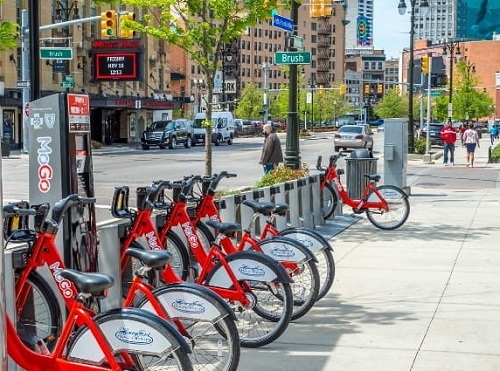For the first time in 12 years since its initial adoption by the State Transportation Commission, the Michigan Department of Transportation is reviewing the state’s “Complete Streets” policy.
[Above image by the Michigan DOT]
As part of that review, Amy Matisoff – the tribal liaison at Michigan DOT – is working on a survey to get as much public input and engagement as possible before making any changes to that policy.
As part of the outreach effort for that survey and the overall “Complete Streets” review effort, Matisoff recently sat down with the Michigan DOT’s “Talking Michigan Transportation” podcast.
“I explain ‘Complete Streets’ to folks as creating a transportation environment or transportation system that feels safe and is usable for everyone,” she said during the podcast interview. “It does get complex really quickly when you start talking about the concept of complete streets, because I think what people see in their mind is different than what actually ends up on the ground.”
Matisoff noted that ultimately “Complete Streets” is more an “iteration of a process” and involves a lot of community engagement.
“That’s the part I think sometimes we miss is the front end, which is the engagement component of it,” she pointed out. “People are just thinking about the end goal of whatever is constructed. But engagement is such a key element of finding out what communities and what people need from their transportation system.
Matisoff added that one of “misconceptions” regarding the state’s road network is that Michigan DOT is “supposed to be the one providing all of that to everyone,” whereas in reality the agency is only responsible for about 11 percent of all the roads crisscrossing the state.
“So it is in partnership with our local transportation agencies that we provide [for] every transportation user on the streets,” she pointed out. “Also it’s about doing little things that don’t have to be big and flashy; things that I think a lot of communities are realizing that they can do fairly easily, that doesn’t take a lot of additional cost. So you’re going to start seeing more bike lanes painted or, you know, brighter crosswalks with better lighting; those types of things.”
There is also the “economic development” side of “Complete Streets” that many people overlook, Matisoff added.
“For example, look at the connection to trail systems, particularly in those more rural areas,” she said. “That is critical to communities that need tourism. So the folks that look at a full system, and really include recreation and transportation and the overlap, I think see a lot more benefit.”

